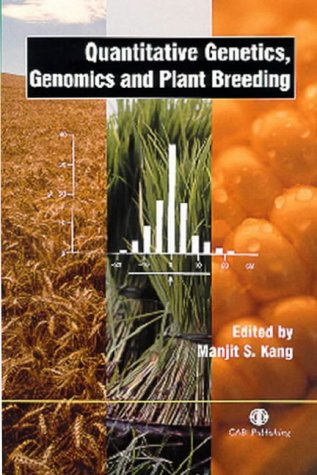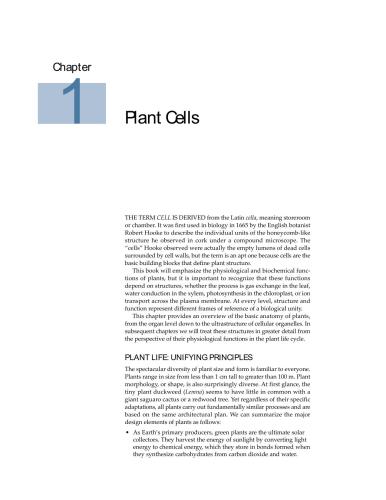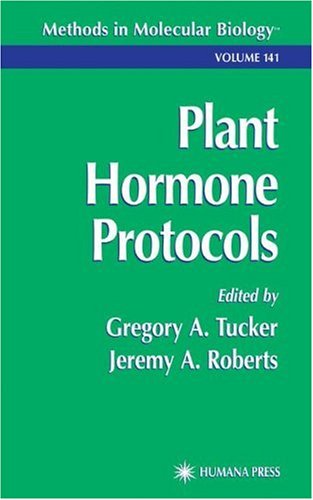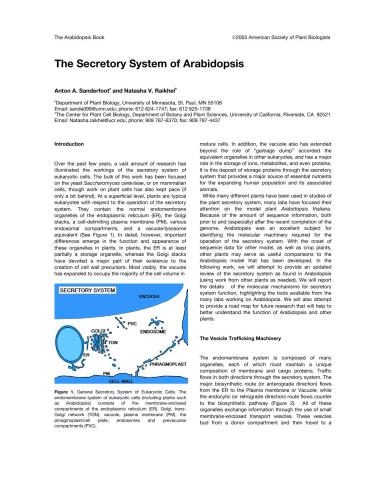Paul Keddy0521864801, 9780521864800
Table of contents :
Cover……Page 1
Half-title……Page 3
Title……Page 5
Copyright……Page 6
Epigraph……Page 7
Contents……Page 9
Preface……Page 19
Acknowledgements……Page 24
1.1 Introduction……Page 25
1.2 Energy flow and photosynthesis……Page 28
1.3 Membranes……Page 34
1.4 Eukaryotic cells……Page 35
1.5 The origin of photosynthesis……Page 39
1.6.1 Changes in ocean chemistry……Page 42
1.6.3 Formation of the ozone layer……Page 44
1.8 Colonizing the land……Page 45
1.9 Plants and climate……Page 50
1.10 Sediment and ice cores: reconstructing past climates……Page 52
1.11 Conclusion……Page 57
Further reading……Page 58
2.1 Introduction……Page 59
2.2.1 Early plant classification: Linnaeus, Bentham, Hooker……Page 60
2.2.2 The discovery of evolution: Wallace, Darwin, Bessey……Page 62
2.2.3 Molecular systematics and phylogeny……Page 65
2.2.4 The two largest families of plants: Asteraceae and Orchidaceae……Page 67
2.2.5 World floristic regions: phylogeny and geography……Page 70
2.2.6 Summary and limitations……Page 72
2.3 Functional perspectives……Page 74
2.3.1 von Humboldt, Raunkiaer, Küchler……Page 75
2.3.2 The classification of climate……Page 80
2.3.3 Limitations……Page 82
2.4 Conclusion……Page 83
Further reading……Page 85
3.1.1 The CHNOPS perspective……Page 87
3.1.2 The costs of acquisition……Page 91
3.2 Carbon dioxide: foraging in an atmospheric reservoir……Page 92
3.3.2 Architecture and photon harvesting……Page 94
3.3.3 Different photosynthetic types……Page 97
3.3.4 An exception to the rule: root uptake of CO2……Page 99
3.3.5 Another view of photosynthetic types……Page 100
3.3.6 The overriding importance of height……Page 101
3.3.7 Ecosystem effects: net primary production changes with plant size……Page 102
3.4.1 Water……Page 103
3.4.2 Mineral nutrients: a single cell perspective……Page 105
3.4.3 Phosphorus……Page 107
3.4.4 Nitrogen……Page 109
3.4.5 Experimental tests for nitrogen and phosphorus limitation……Page 110
3.4.6 Other sources of evidence for nutrient limitation……Page 115
3.5.1 Small scale heterogeneity……Page 117
3.5.2 Resource gradients……Page 118
3.5.3 Resources in transitory patches……Page 124
3.6 Resources as a habitat template for plant populations……Page 125
3.7 Resource fluctuations complicate short-term ecological studies……Page 129
3.8.1 Limitation by scarce resources……Page 132
Epiphytes……Page 133
Succulents……Page 134
Carnivorous plants……Page 135
Parasites……Page 136
3.8.2 Conservation of scarce resources……Page 138
3.9 Soils……Page 140
3.10 Two historical digressions……Page 144
3.11 Humans and soil resources……Page 145
3.12 Conclusion……Page 147
Further reading……Page 149
4.1.1 Definitions……Page 150
4.1.2 More on terminology……Page 151
4.2.1 Short-term effects: stress has metabolic costs……Page 152
Grasses along a resource gradient……Page 153
4.2.2 The costs of adaptation to stress……Page 155
4.2.3 Growth rate……Page 158
4.2.4 Seed size……Page 159
4.2.5 Clonal integration……Page 164
3. The elm-oyster model……Page 166
4.3.1 Deserts……Page 168
4.3.2 Mediterranean shrublands……Page 174
4.3.3 Rock barrens……Page 176
4.3.4 Coniferous forests……Page 180
4.4 Unavailability of resources……Page 183
4.5.1 Salinity……Page 186
4.5.2 Cold environments: arctic and alpine examples……Page 191
4.5.3 Early spring photosynthesis in temperate climates……Page 195
4.6.1 Cold and drought tolerance of lichens……Page 197
4.6.2 Endolithic communities……Page 198
4.6.3 Flood tolerance……Page 200
4.7 The smoking hills: a natural occurrence of stress from air pollution……Page 203
4.8 Effects of ionizing radiation upon mixed forest……Page 204
4.9 Moisture and temperature at different scales……Page 206
4.10 Conclusion……Page 208
Further reading……Page 209
5.1.1 The importance of competition……Page 210
5.1.3 Stress, strain, and the costs of competition……Page 211
5.2.1 Intraspecific competition……Page 212
5.2.2 Distinguishing between intraspecific and interspecific competition……Page 214
5.2.3 Competition intensity……Page 215
5.2.4 Competitive effect and competitive response……Page 217
5.2.5 Competitive dominance……Page 218
5.3.1 Self-thinning……Page 221
5.3.2 Dominance patterns in monocultures……Page 222
5.3.3 Density dependence in annual plants……Page 224
5.3.4 The relationship between intensity and asymmetry of competition……Page 226
5.4.1 Establishing hierarchies……Page 228
5.4.2 The consistency of hierarchies……Page 230
5.4.3 Light and shoot size……Page 233
5.4.4 Foraging for patches of light or soil nutrients……Page 237
5.5 Mycorrhizae and competition……Page 238
5.6.1 Measuring competition intensity……Page 240
5.6.2 Competition intensity gradients in an old field……Page 241
5.6.4 Competition intensity along a soil depth gradient……Page 242
5.6.6 Competition along an altitudinal gradient……Page 244
Further reading……Page 247
6.1 Introduction……Page 249
6.2.2 Intensity……Page 250
6.2.3 Frequency……Page 251
6.3.1 Fire……Page 252
6.3.2 Erosion……Page 260
Beaver ponds……Page 262
Alligator holes……Page 266
6.3.4 Burial……Page 267
6.3.6 Waves……Page 273
6.3.7 Storms……Page 276
6.4.1 Landslides……Page 278
6.4.2 Volcanic eruptions……Page 279
6.4.3 Meteor impacts……Page 283
6.5.1 The Hubbard Brook study of forested watersheds……Page 288
6.5.2 Ottawa River marshes……Page 292
6.6 Disturbance and gap dynamics……Page 293
6.6.1 Regeneration from buried seeds after disturbance……Page 294
6.6.2 Gap regeneration in deciduous forests……Page 296
6.6.4 Freshwater marshes……Page 298
6.7 Synthesis: fire, flooding, and sea level in the Everglades……Page 299
6.8 Competition, disturbance, and stress: the CSR synthesis……Page 300
Further reading……Page 306
7.1 Introduction……Page 308
7.2.1 Herbivores in African grasslands……Page 310
7.2.2 Herbivorous insects in tropical forest canopies……Page 313
7.2.3 Giant tortoises on islands……Page 314
7.2.4 Herbivory in anthropogenic landscapes……Page 316
7.3.2 Structures that protect seeds: strobili and squirrels……Page 317
7.3.3 Secondary metabolites that protect foliage……Page 321
7.3.4 Two cautions when interpreting anti-herbivore traits……Page 323
7.3.5 Food quality and nitrogen content……Page 324
7.3.6 Coevolutiona brief preview……Page 326
7.4 Field experiments……Page 327
7.4.1 Herbivorous insects in deciduous forest canopies……Page 328
7.4.2 Land crabs in tropical forest……Page 329
7.4.3 Herbivores in grassland: the Cape Province, the Pampas, and the Serengeti……Page 330
7.4.5 Large mammals in deciduous forest……Page 337
7.4.6 Effects of an introduced species: nutria……Page 340
7.5 Empirical relationships……Page 342
7.6.1 Top-down or bottom-up?……Page 346
7.6.2 Effects of selective herbivory on plant diversity……Page 348
7.6.3 A simple model of herbivory……Page 349
7.6.4 Extensions of herbivory models……Page 351
7.7 Conclusion……Page 356
Further reading……Page 358
8.1.1 Definitions……Page 360
8.1.2 History……Page 361
8.2.1 Nurse plants……Page 362
8.2.2 Stress gradients and competition……Page 365
8.2.3 More cases of co-operation……Page 366
8.2.4 Summary……Page 369
8.3.1 Ectomycorrhizae and endomycorrhizae……Page 370
8.3.2 Ectomycorrhizae and forests……Page 373
8.3.3 Mycorrhizae in wetlands……Page 374
8.3.4 Costs and benefits of mycorrhizal associations……Page 378
8.3.5 Lichens……Page 379
Mutual benefits of pollination……Page 382
Pollination ecology founded by Sprengel and Darwin……Page 386
Fly pollination: parasitism or mutualism?……Page 387
8.4.2 Animals and seed dispersal……Page 389
Cakile edentula……Page 391
Bats and fruits……Page 394
Myrmecochory……Page 395
Rodents and mast……Page 397
Quantitative studies of the fates of seeds……Page 400
Coevolution of Sideroxylon and the dodo: a cautionary tale……Page 401
8.4.3 The costs of sexual reproduction……Page 403
Are there measurable advantages to out-crossing?……Page 405
Are pollinators efficient?……Page 406
Life without sex……Page 409
How many seeds will a plant produce? And why?……Page 410
8.4.5 Animals defending plants……Page 411
Foregut fermentation, including ruminants……Page 414
Hindgut fermentation……Page 417
8.5.1 Population dynamics models……Page 419
8.5.2 Cost-benefit models……Page 420
8.6 Mutualism and apparent competition……Page 422
1. The search for nature nuggets……Page 423
3. The failure to measure……Page 424
Further reading……Page 426
9.1 Introduction……Page 427
9.2 >106 years: the origin of the angiosperms and continental drift……Page 429
9.2.1 Temperate evergreen forests……Page 434
9.2.2 Deserts……Page 435
9.2.3 Tropical floras……Page 436
9.3 >104 years: the Pleistocene glaciations……Page 442
9.3.2 Loess……Page 443
9.3.3 Pluvial lakes……Page 446
9.3.4 Drought and tropical forests……Page 447
9.3.5 Sea level decrease……Page 449
9.3.6 Migration……Page 450
9.3.7 Hominids……Page 452
9.3.8 Flooding……Page 454
9.4.1 Succession……Page 455
Succession after the retreat of glaciers: deglaciated valleys……Page 456
Succession in peat bogs……Page 458
Succession on sand dunes……Page 461
Succession and fire in coniferous forests……Page 463
Succession, fire and vital traits in Tasmanian rain forests……Page 468
9.4.3 Predictive models for plant succession……Page 470
9.4.4 Synthesis……Page 472
9.5 Conclusion……Page 478
Further reading……Page 479
10.1 Introduction……Page 481
10.2 Describing pattern along obvious natural gradients……Page 482
10.3 Multivariate methods for pattern detection……Page 488
10.3.1 The data matrix……Page 489
Presence/absence data……Page 490
Abundance data……Page 491
10.3.4 Ordinations based upon species data……Page 492
10.3.5 Ordinations combining species and environmental data……Page 494
10.3.6 Functional simplification in ordination……Page 495
10.4 Vegetation classification……Page 498
10.4.1 Phytosociology……Page 499
10.4.2 Classification and land management……Page 500
10.5.1 Clements and Gleason……Page 509
10.5.2 The temporary victory of the Gleasonian view……Page 510
10.5.3 Null models and patterns along gradients……Page 511
10.6 Empirical studies of pattern along gradients……Page 515
10.7 Conclusion……Page 524
Further reading……Page 525
11.2 Large areas have more plant species……Page 526
11.3 Areas with more kinds of habitat have more species……Page 529
11.4 Equatorial areas have more species……Page 532
11.5.1 Four key events……Page 538
11.5.2 Some characteristics of angiosperms……Page 539
11.5.3 Physiological constraints on diversity are likely additive……Page 540
11.6.1 Mediterranean climate regions……Page 542
11.6.2 Carnivorous plants……Page 544
11.6.4 Diversity, biogeography, and the concept of endemism……Page 546
11.7 Models to describe species diversity at smaller scales……Page 547
11.7.1 Intermediate biomass……Page 548
11.7.2 Competitive hierarchies……Page 550
11.7.3 Intermediate disturbance……Page 551
11.7.4 Centrifugal organization……Page 553
11.8 Relative abundance – dominance, diversity, and evenness……Page 556
11.9 Laboratory experiments on richness and diversity……Page 563
11.10 Field experiments on richness and diversity……Page 565
11.11 Implications for conservation……Page 567
11.12 Conclusion……Page 570
Further reading……Page 571
12.1 Introduction……Page 573
12.2.1 Ancient Assyria……Page 574
12.2.2 Deforestation in Ancient Rome and the Mediterranean……Page 575
12.3.1 The destruction of Louisiana’s alluvial forests……Page 577
Humans and the Louisiana environment……Page 581
Sugar cane and cotton……Page 582
Cypress swamps……Page 583
12.3.2 Islands: Easter Island and the Galapagos……Page 588
12.3.3 Boreal forests……Page 593
12.4.1 Designing reserve systems……Page 594
12.4.2 Hot spots of biological diversity……Page 597
12.4.3 Primary forests……Page 598
12.4.4 Large wetlands……Page 600
12.4.5 New discoveries of species in the Guyana highlands……Page 602
12.4.6 Economic growth, human welfare, and wilderness……Page 604
12.5 Fragmentation of natural landscapes……Page 605
12.5.1 Fens in agricultural landscapes……Page 606
12.5.2 Deciduous forests in agricultural landscapes……Page 608
12.5.3 How much is enough?……Page 610
12.6.1 Two perspectives……Page 612
12.6.2 Plant communities are dynamic……Page 616
12.6.3 Ecological footprints for human cities……Page 617
12.6.4 Thresholds……Page 619
12.7 Restoration……Page 623
12.8 Indicators……Page 626
12.9 Conclusion……Page 628
Further reading……Page 632
25 review questions, final exam questions, or assignments……Page 634
References……Page 636
Index……Page 691







Reviews
There are no reviews yet.